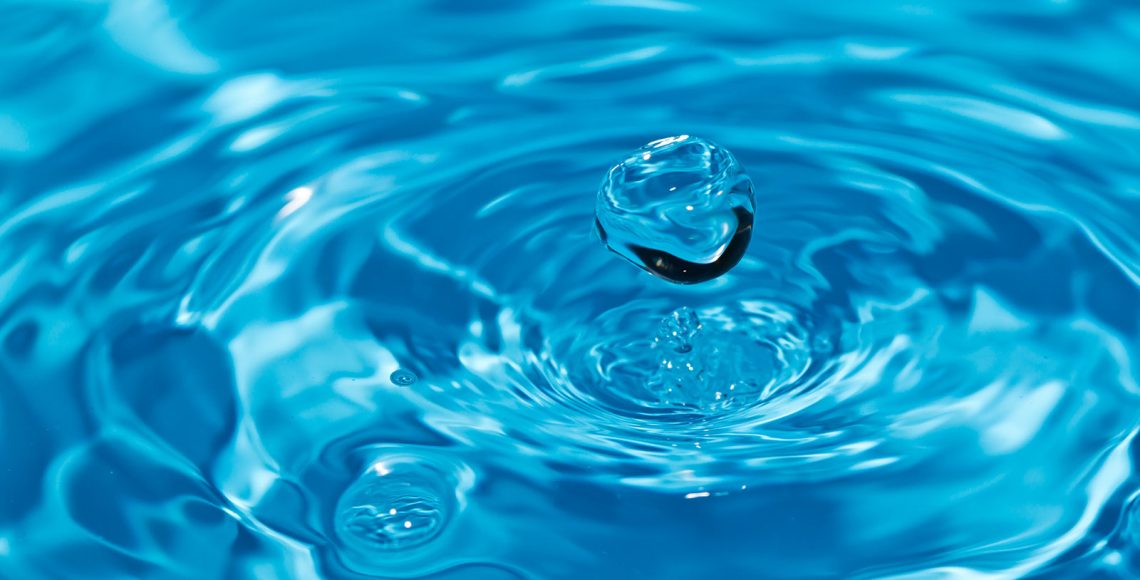The Power of Water
Water is one of the most indispensable and essential components of the general wellbeing and health of humans. In fact, there would be no life without water since the human body consists of seventy percent water. Like air quality in a home, water quality is an equally important consideration for any new construction or restoration. Both are susceptible to contaminants and both can be addressed with peace of mind solutions.
History
Water treatment throughout history dates back over 4,000 years with most civilizations figuring out that boiled and strained water helped eliminate unwanted substances for achieving better tasting water.
The first known domestic filter appeared when the Greek scientist Hippocrates invented the so-called Hippocratic sleeve, which consisted of a simple cloth-back filter.
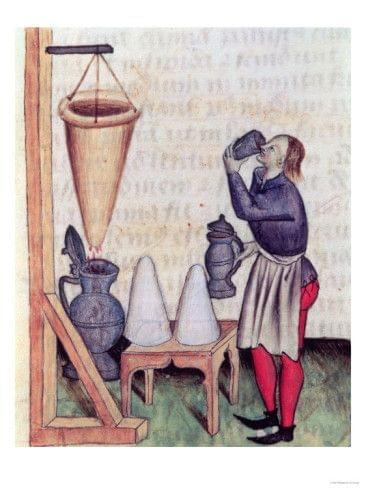
Other civilizations filtered impurities from their water by sifting it through sand and gravel. With the development of the microscope, scientists zoomed into what exactly is in the water. Out of this revelation came filters made of charcoal, sponge, and wool to eliminate anything unwanted in the water. By the 20th Century, most developed countries had established regulations that set minimum standards of water quality. Even with these standards and water quality supply improving, for a variety of reasons the market for home filtration systems continues to evolve in making water even cleaner, better tasting, and rid of unwanted elements.
Are you drinking clean water?
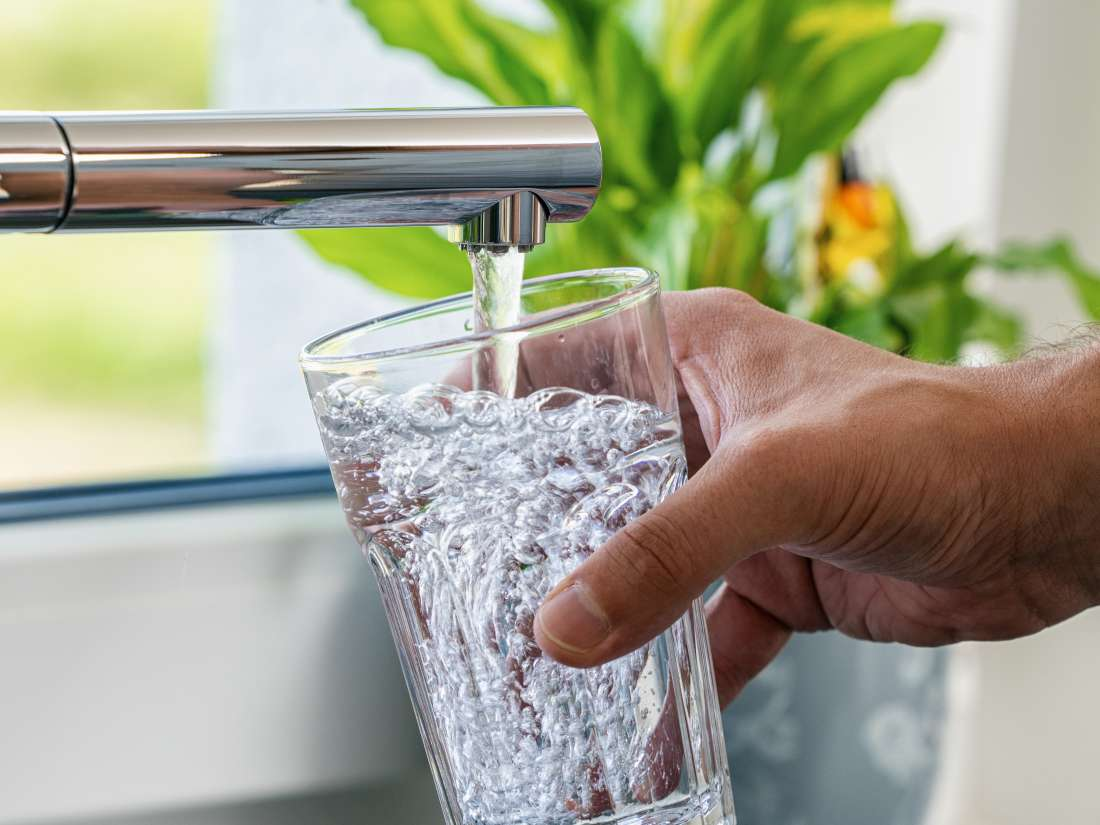
In order for us to stay healthy, it’s critical that our water is safe to drink. If we can’t always trust the safety of the water coming out of our taps or wells, then it’s up to us to make it secure. That starts with knowing which contaminants to look out for—and how to ensure you’re drinking safe water.
Under the Safe Drinking Water Act, a water contaminant is defined as “any physical, chemical, biological, or radiological substance or matter in water.”
Put simply this means, anything other than an actual water molecule qualifies as a contaminant. Not all contaminants that enter drinking water are harmful. For example, if a stray piece of sand makes its way into your drinking water, it would qualify as a “physical contaminant”—but drinking it won’t harm you. Consuming contaminated water can lead to mild to severe symptoms depending on how long a person is exposed, how healthy the person is, and more.

Water Contaminants
According to EWG, nearly all Americans today, including new born babies, have PFAS in their blood, and up to 110 million people may be drinking PFAS-tainted water.
According to the EPA, Per- and polyfluoroalkyl substances (PFAS) are a group of man-made chemicals that includes PFOA, PFOS, GenX, and many other chemicals. PFAS have been manufactured and used in a variety of industries around the globe, including in the United States since the 1940s. PFOA and PFOS have been the most extensively produced and studied of these chemicals. Both chemicals are very persistent in the environment and in the human body – meaning they don’t break down and they can accumulate over time.
Studies indicate that PFOA and PFOS can cause reproductive and developmental, liver and kidney, and immunological effects in laboratory animals. Both chemicals have caused tumors in animals. The most consistent findings are increased cholesterol levels among exposed populations, with more limited findings related to:
- Low infant birth weights
- Effects on the immune system
- Cancer (for PFOA)
- Thyroid hormone disruption (for PFOS)
There are many other substances and contaminants in water that are harmful to our health. The full list of potential drinking water contaminants includes thousands of entries. This can explain why numerous studies find that drinking water across the U.S. is highly contaminated. It’s no wonder when you consider the sheer number of ways that contaminants are capable of entering our drinking water, from industrial leaks to agricultural runoff, and even through additives added at water treatment facilities. Here are a variety of common drinking water contaminants that can potentially cause health issues:
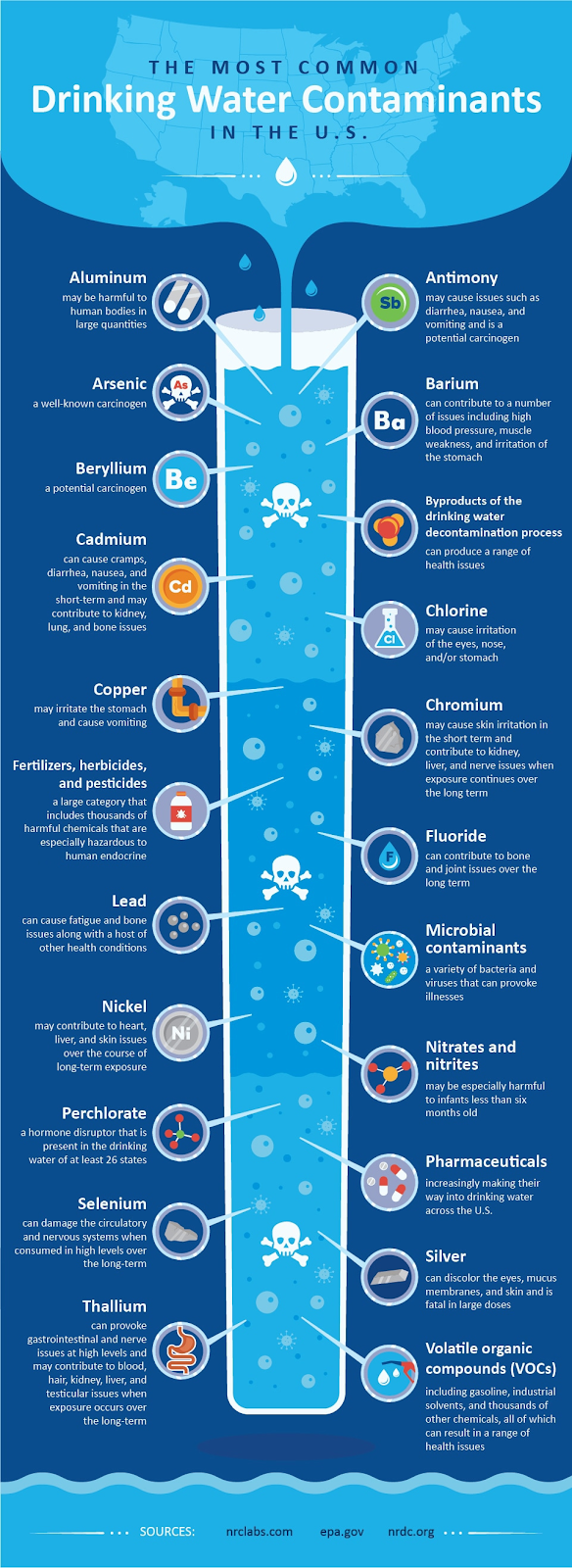
Water Filtration Systems
There are various types of advanced home water filtration system available in the market and the top three are the following:
Activated carbon: It is one of the most common and the least expensive among the many types of water filters. The system is usually installed under the sink. You just replace the filter cartridges as often as needed. Activated carbon filtration systems are known to be effective in removing parasites, chemicals and heavy metals that may be present in the water.
Cation exchange water filter systems: It is also called ion exchange filters or water softeners. In this filter system, positively-charged ions are used to attract negatively-charged ions that are harmful, such as barium and calcium. Barium can cause some health issues as prolonged exposure to this earth metal can affect your internal organs. Magnesium and calcium can damage pipes and also make water taste bad.
Reverse osmosis: This is considered as the most effective home water filtration system. Reverse osmosis forces the water to pass through a semi-permeable membrane using air pressure. Almost all contaminants are effectively filtered out with this system. Water filtration process is either 5, 6 or 7 stages. Brands that process water in more stages (6 or 7) are able to produce alkaline water.
Choose The Best Filtration System For Your Home
To choose the best filter for your home water consumption needs, it is helpful first to learn more about your water source. Your water filtering needs depend on the quality of your particular water supply, your personal preferences when it comes to taste and odor, and any special health circumstances in your household. Understanding what contaminants may already exist in your water is an important first step when deciding whether you want or need a filtration system and, if so, what type will best meet your needs.
Then, consider how the filter fits your home, lifestyle and budget. Many different types of filters are available to consumers. Determining which type is most appropriate for you—or whether you need a filter at all—depends on what functions you want a filter to provide. No filter eliminates all contaminants, so understanding what filters do and do not do is important.
Water filter pitchers
These are pitchers that are filled from the top and have built-in filters that water must pass through before being poured out for drinking or other use. They are inexpensive to purchase, require no installation and are easy to use.
Refrigerators
Many refrigerators have a built-in filter that supplies water through the door and supplies an automatic ice maker. It comes with many refrigerators and often improves water taste.
Faucet-mounted filtration systems
These are attached to a standard faucet and can be switched on and off between filtered and unfiltered water flow. It allows easy switching between filtered and unfiltered water and is relatively inexpensive.
Faucet-integrated filtration systems
These are faucets designed with built-in filters (instead of an attached filter, like a faucet-mounted system) and require installation.
The above options are relatively inexpensive and easy to install, yet they require frequent filter replacement. Not only this may be cumbersome, but the quality of the filtering and with it the water taste degrades over the relatively short filter life.
It would also be best to note that using an inappropriate purification system may result in water not being filtered properly as well as slow down water pressure thus making it inefficient and expensive. Hence it’s important to choose a system that can provide high quality filtration which at minimum removes particles larger than 0.001μm while maintaining a proper water flow of 1.5 – 2.0 GPM (Gallons per Minute).
The chart below demonstrates the difference in quality between Carbon and Micro Filtration and a 4-stage Reverse Osmosis purification system:
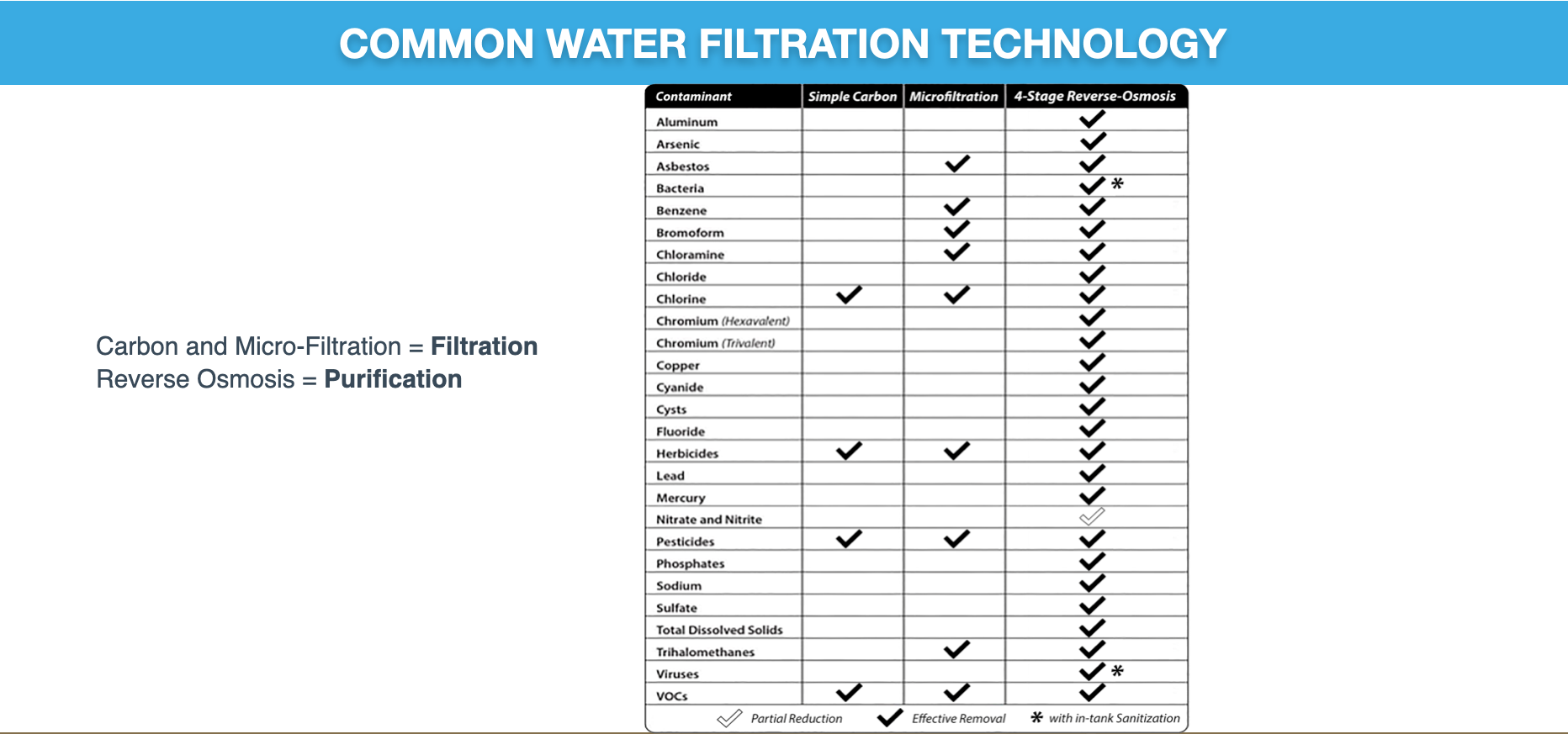
Water Can Heal
Given the significance of water in sustaining life, it’s no surprise that access to clean water is a basic human right. Your body needs safe drinking water for it to remain healthy.
Our brains are made up of eighty five percent water and so even if we lose just one to two percent of body water, then this vital organ immediately suffers.
This can have detrimental effects on our well-being. It is important to constantly replenish the body with high-quality water, to strip nasty toxins from our vital organs and help to carry nutrients to our cells, preventing us from becoming dehydrated. By making sure you stay hydrated, you’ll feel sharper, perform better, have more energy, get more done, and give your body what it needs to help ensure better health.
Impure water, on the other hand, can lead to illness and even death in extreme circumstances. That’s why the importance of water purification is incredibly high today. The good news? You can take charge of your water consumption habits and make sure you’re drinking the safest, and purest water possible. The most effective solution is to invest in an advanced home water purification system. With the increasing amount of water pollution, installing a water purifier that can remove 95-99% of most water-borne contaminants that can threaten health or taste such as lead, copper, cysts and nitrates is a necessity rather than a luxury. Removing only a portion of water impurities while at the same time removing essential minerals will not yield the sought after health benefits.
For that reason we recommend water purifiers from renowned brands like Bluewater who use a proprietary technology called SuperiorOsmosis which can remove contaminants as small as 0.0001μm while maintaining an amazing 50-60% recovery rate that reduces waste significantly, and helps reduce environmental impact.
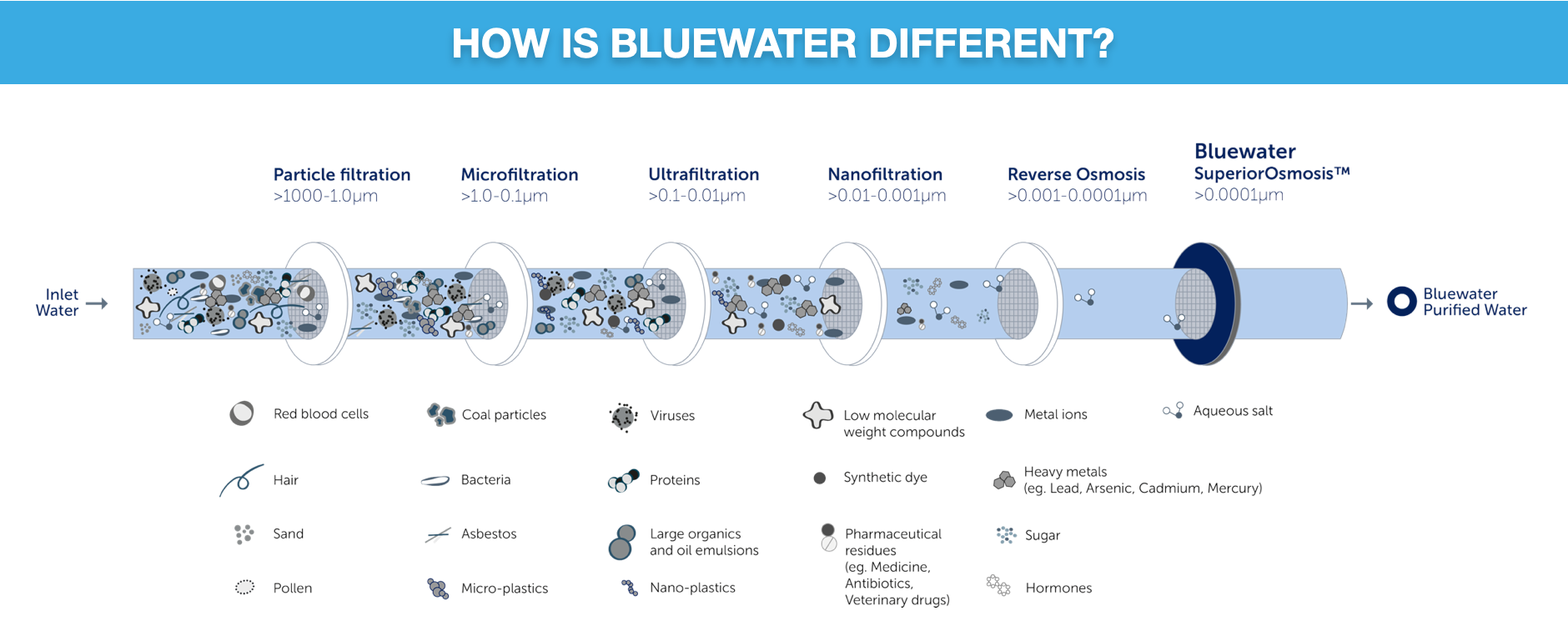
Water Is The Universal Solvent
It is involved in every function of the human body. Now more than ever, it is essential that we are conscious of what we put into our body. One of the most basic of human needs is water. Drinking purified water assures that the vital minerals you need to function are present in the water you’re drinking.
Everyone has the right to drink water as clean as nature intended. Now, you can create your own source of pure, fresh and premium water with the right kind of product. Look for products that have the United States Water Quality Association’s Gold Seal Trademark. This seal is an industry standard that certifies water treatment products have been tested to meet industry standards. It ensures that a product is made from safe materials, that the claims listed on the packaging are backed by test data.

Protect yourself and your family by making sure that the water you drink and use is free of waterborne contaminants. Invest in a product that delivers crystal clean, healthier and great tasting drinking water directly out of your tap. Your body will thank you for it.
Contact us to find out how to obtain the best water filtration system at the best value for your home.

